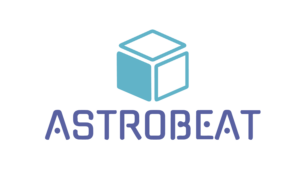
Register with Plumtri!
Register on plumtri as an Individual or as an Organisation to gain access to all of its useful features and remain updated on the latest R&I news, events and funding opportunities.
-
 Welcome to plumtriA platform for Research & Innovation
Welcome to plumtriA platform for Research & Innovation -
 Looking for Funding?Check out the current open calls
Looking for Funding?Check out the current open calls -
 Register today to start receiving our monthly newsletter
Register today to start receiving our monthly newsletter -
 Looking to partner up?Search our list of registered profiles
Looking to partner up?Search our list of registered profiles -
 You have questions on a particular funding programme?
You have questions on a particular funding programme?
Project: ASTROBEAT - Advanced Spacecraft Technology for Repairing of Broken External Armor using cold-welding adhesion Treatment
ASTROBEAT proposes for the first time the investigation of the cold-welding phenomenon for use in spacecraft hull repair following a hypervelocity impact by space debris. An experimental test rig will be tested and qualified, at TRL 6, on the International Space Station, thanks to an environment providing for an extended period of time micro-gravity conditions.
The project is led by Dr Leonardo Barilaro, Senior Lecturer in Aerospace Engineering a MCAST – The Malta College of Arts, Science and Technology.
It has been shown that similar metallic materials can fuse or weld at ambient temperatures provided that there are sufficiently high contact forces. In the Space environment, this fusion is aided by the fact that the joint surfaces do not re-oxide after wear and, as a consequence, atomic diffusion of the metal occurs at lower contact forces. Cold-welding in the Space environment was first analyzed in the 1960s as an adverse reaction from wear and it was attributed to be the cause of failure of certain mechanisms. This research, however, will investigate the potential of cold-welding for use in spacecraft hull perforation repair.
Spacecraft shield and hull perforation may occur after a hypervelocity impact due to micrometeoroids or space debris. In-situ repair from inside the vehicle is preferable due to the pressure differences. Evaluating a paradigm shift in cold-welding adhesion, this project aims at developing a test apparatus to apply custom repair patches and will investigate its adhesion properties. The recovery of the payload will allow further metallurgical analysis of the cold-welded joint. After the terrestrial development and validation using a vacuum chamber (first phase), the core activity is the design and testing of the experimental setup and its integration as a payload to carry out the activity onboard the International Space Station. The test rig will be able to simulate the hull breach in terms of crack and opening and will be capable of applying the repair patch and monitoring its performance (second phase).
Dr Leonardo Barilaro is also coordinating the Space Art project that will send new music onboard the International Space Station. The main feature of this initiative is its interdisciplinary approach, utilizing music as a powerful language to transcend cultural barriers and reach diverse audiences beyond formal education systems.
The Department of Aviation at the Malta College of Arts, Science & Technology (MCAST) and the Aerospace, Mechanical and Electronic Department at South East Technological University (SETU) will collaborate with the Centre of Studies and Activities for Space (CISAS) “G. Colombo” of the University of Padova and the Skyup Academy, Italy for the second phase of this research project.
ASTROBEAT (SUP-2023-09) is a EUR 125,000 project financed by the Malta Council for Science & Technology through the Space Upstream Programme.The International Space Station payload opportunity is being made available by Nanoracks, through its Space Act Agreement with NASA’s U.S. National Lab.
Information, logo and video source:
Further Information: External Link

